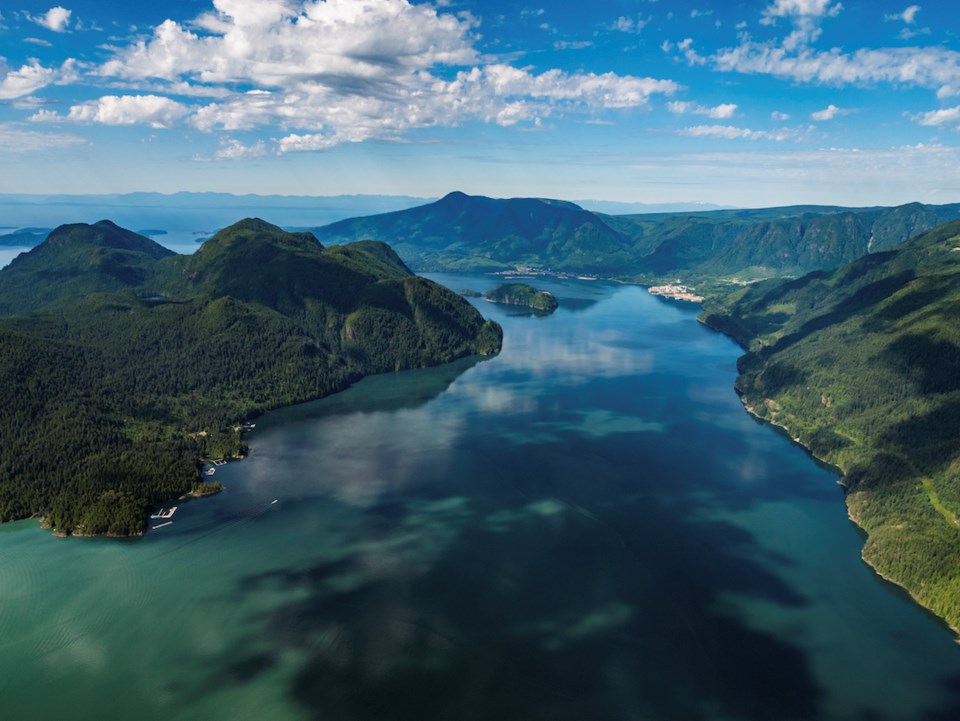Editors note: This has been updated with Gibsons' numbers.
The 2021 census has revealed what many on the Sunshine Coast know - more people are moving in, even as Statistics Canada’s data shows urban growth is higher than growth in rural areas.
Coast count
The biggest population percentage increase on the Sunshine Coast actually took place on the islands. Between 2016 and 2021, the Gambier Island Trust Area’s population increased by 74.1 per cent – going from 247 people to 430 and a total of 593 private dwellings. Of those dwellings, 215 are occupied by usual residents and considered their permanent address.
Gambier Island Trustee Kate-Louise Stamford said she was not completely taken by surprise by the statistic, as the area includes 30 islands spread across Átl'ka7tsem/Howe Sound including Anvil Island to Turnagain Island, and the census came during high turnover of real estate.
“The difference was people seem to be coming to live here,” Stamford said. “It was probably realizing the importance of space due to the pandemic restrictions, as well as having the greater ability to work remotely now. Our internet is slowly getting better.”
Percentage wise the numbers seem huge, but Stamford says the actual number of people spread across the islands is still a fairly small group.
Overall, the Sunshine Coast Regional District (SCRD) saw a population increase of 7.3 between 2016 and 2021, when the number of residents grew from 29,970 to 32,170. There are a total of 17,982 private dwellings, according to the latest census.
The District of Sechelt’s population rose by 6.2 per cent, with 10,847 people. There are 5,738 private dwellings in the District, with 5,128 of them lived in by permanent residents.
The Town of Gibsons saw a mere increase of just over three per cent, which keeps the municipality under the 5,000 threshold that would have tripled its policing costs. The estimated total population for the town is near 4,758 people.
Part of the Sechelt Indian Government District located on the lower Sunshine Coast increased by 10.1 percent, growing from 676 people in 2016 to 744 in 2021.
Of the SCRD’s electoral areas, Area F (West Howe Sound) saw the biggest percentage increase by 17.8 per cent, up 364 new residents to a total of 2,407 people. Area A (Pender Harbour/Egmont) followed with 16 per cent, or 420 new people. Area B (Halfmoon Bay) saw an increase of 8.9 per cent, and a total of 2,969 people, 243 who are new. Elphinstone’s Area E population rose to 3,883 people, an increase of six per cent or 219 people. Area D (Roberts Creek) saw the smallest local increase of three per cent, with 102 new people bringing the total population to 3,523 people.
Further data of unincorporated places show Halfmoon Bay’s population increased by 12.2 per cent, up to 505 people by 2021. There are 337 private dwellings, 254 of which are occupied by usual residents.
South Pender Harbour’s population increased by 6.5 per cent, and had a total of 1,264 people by the 2021 count. 659 of the total 878 private dwellings were occupied by permanent residents.
In the Roberts Creek community, the population rose to 1,949 people, an increase of 4.4 per cent. Of the 957 private dwellings, 853 are occupied by permanent residents.
Howe Sound at a glance
The West Vancouver-Sunshine Coast-Sea to Sky Country riding saw an increase of 10.2 per cent between the latest data sets to a total of 131,206 people.
The Southern Gulf Islands saw growth of 28.9 per cent when its population increased from 4,732 to 6,101, marking it as sixth on the list of municipalities with populations above 5,000 that saw the most growth. Squamish placed 17 on the same list with a population increase of 22.2 per cent.
Bowen Island saw a percentage increase of 15.7, bringing its population to 4,256. Of the 2,036 private dwellings, permanent residents lived in 1,724.
Nearby, Powell River’s population increased by 6 per cent to a total of 13,943.
National growth
Since the last census in 2016, Canada’s overall population grew by 5.2 per cent to a total of 36,991,981 at the time of the 2021 count. Large urban centres with populations of 100,000 or more saw the bulk of Canada’s population growth, and Statistics Canada said the country continues to urbanize. Between 2016 and 2019, a record number of immigrants moved to Canada.
Meanwhile, Canada’s rural population increased by 26,609 people or 0.4 per cent - 15 times slower than urban areas of Canada.


